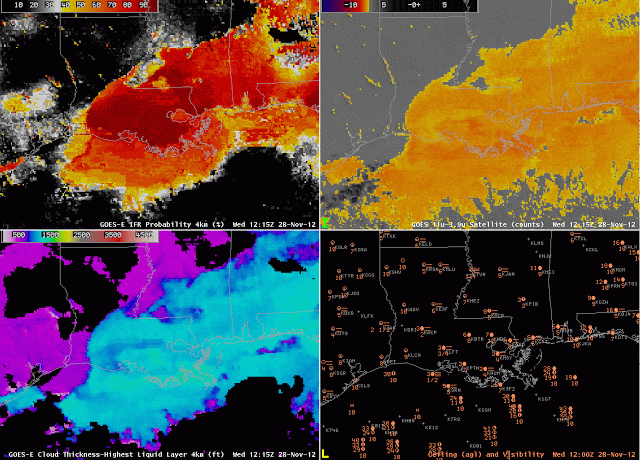The animation of the GOES-R IFR Probability product, above, shows one of its strengths: it has a similar look during night and day. The traditional fog product created by the brightness temperature difference between 10.7 µm and 3.9 µm data from GOES-East, switches sign as the sun rises and the amount of reflected 3.9 µm radiation increases. The IFR Probability maintains a steady signal that matches observed IFR conditions.
Note that the Brightness temperature difference product shows a signal along the Louisiana/Texas border (over the Toledo Bend Reservoir on the Sabine River), and also over Lake Sam Rayburn, Lake Livingston and Lake Conroe in east Texas. It is possible that there is shallow fog over these bodies of water (post-sunrise imagery shows no signal); the signal might also arise from the approximately 1-pixel co-registration error between the 3.9 µm and 10.7 µm channels on GOES-13. This possibly erroneous signal in the brightness temperature difference does propagate into the GOES-R IFR probability field.

